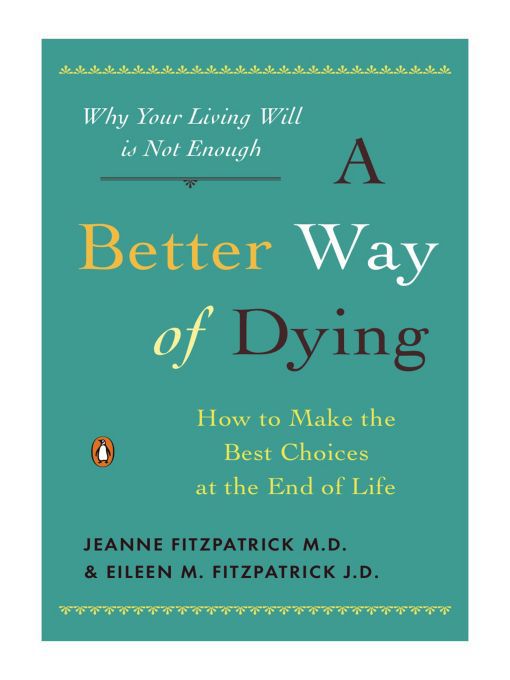
Advanced directives and living wills have improved our ability to dictate end-of-life care, but even these cannot guarantee that we will be allowed the dignity of a natural death. Designed by two sisters-one a doctor, one a lawyer-and drawing on their decades of experience, the five-step Compassion Protocol outlined in A Better Way of Dying offers a simple and effective framework for leaving caretakers concrete, unambiguous, and legally binding instructions about your wishes for your last days. Meant for people in every walk of life-from the elderly, to those in the early stages of mentally degenerative diseases like Alzheimer's, to healthy young people planning for an unpredictable future-this book creates space for a discussion we all must have if we wish to ensure comfort and control at the end of our lives..
-
Creators
-
Publisher
-
Release date
January 26, 2010 -
Formats
-
Kindle Book
-
OverDrive Read
- ISBN: 9781101195604
-
EPUB ebook
- ISBN: 9781101195604
- File size: 341 KB
-
-
Accessibility
-
Languages
- English
-
Reviews

Loading
Formats
- Kindle Book
- OverDrive Read
- EPUB ebook
subjects
Languages
- English
Why is availability limited?
×Availability can change throughout the month based on the library's budget. You can still place a hold on the title, and your hold will be automatically filled as soon as the title is available again.
The Kindle Book format for this title is not supported on:
×Read-along ebook
×The OverDrive Read format of this ebook has professional narration that plays while you read in your browser. Learn more here.